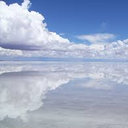Evaluation of the effects of honey on acute-phase deep burn wounds.
Fjalë kyçe
Abstrakt
This study aimed to clarify the effects of honey on acute-phase deep burn wounds. Two deep burn wounds were created on mice which were divided into four groups: no treatment, silver sulfadiazine, manuka honey, and Japanese acacia honey. Wound sizes were calculated as expanded wound areas and sampled 30 minutes and 1-4 days after wounding for histological observation. The wound sections were subjected to hematoxylin and eosin and immunohistological staining to detect necrotic cells, apoptotic cells, neutrophils, and macrophages. The no treatment group formed a scar. The redness around the wound edges in the silver sulfadiazine group was the most intense. All groups exhibited increased wound areas after wounding. The proportions of necrotic cells and the numbers of neutrophils in the manuka and acacia honey groups were lower than those in the no treatment and silver sulfadiazine groups until day 3; however, there were no significant differences between all groups on day 4. These results show that honey treatment on deep burn wounds cannot prevent wound progression. Moreover, comparing our observations with those of Jackson, there are some differences between humans and animals in this regard, and the zone of hyperemia and its surrounding area fall into necrosis, which contributes to burn wound progression.



